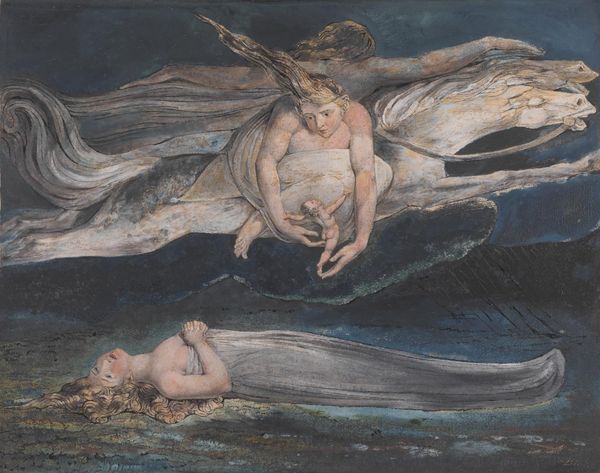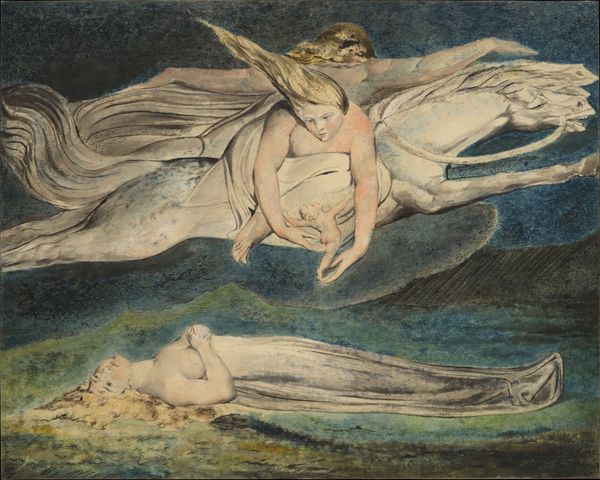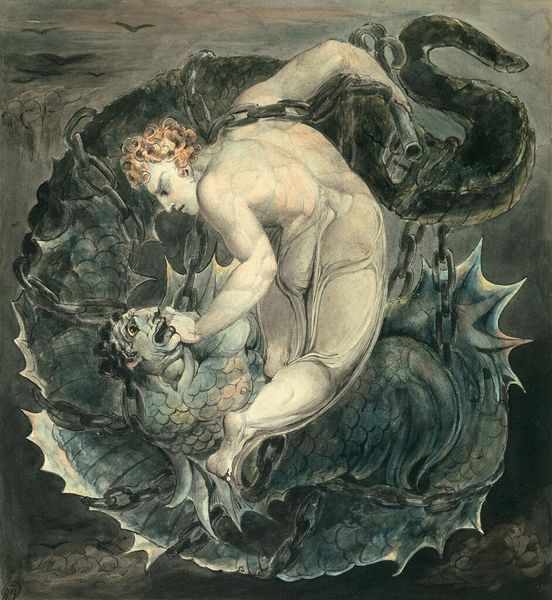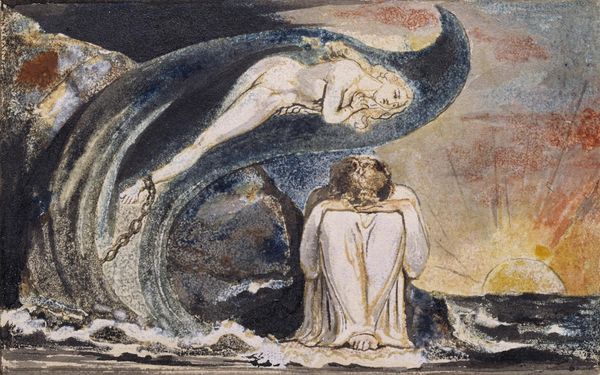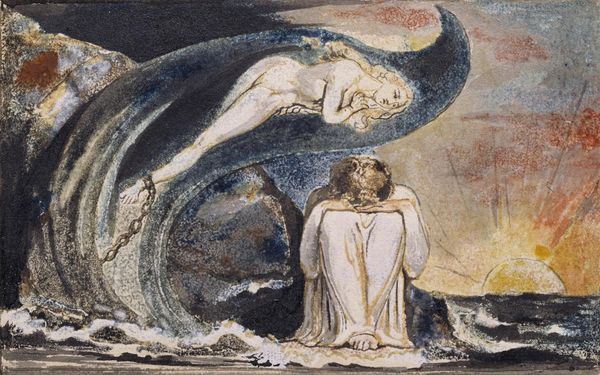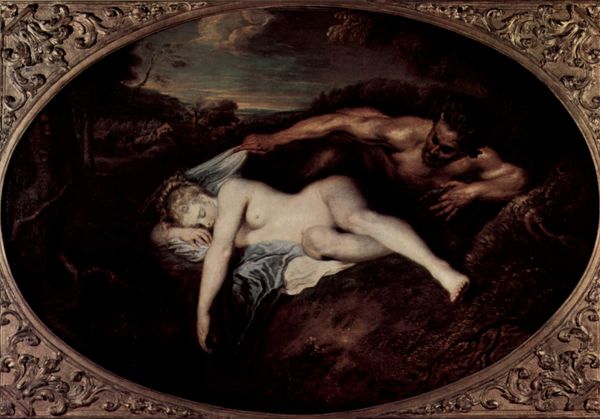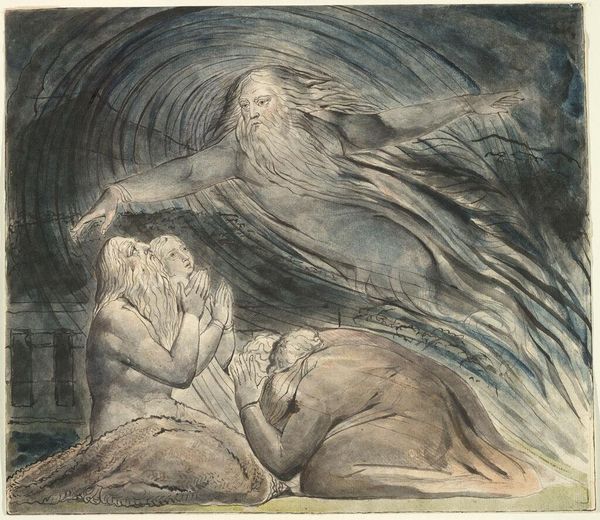
Dimensions: support: 425 x 539 mm
Copyright: CC-BY-NC-ND 4.0 DEED, Photo: Tate
Editor: Here we have William Blake's "Pity," housed at the Tate. It's such an ethereal composition. What strikes me most is the palpable sense of anguish. What do you see in this piece? Curator: Blake’s exploration of pity isn't merely sentimental; it's a radical engagement with social suffering. Consider the historical context: late 18th century, revolution, and the rise of industrial capitalism. Blake critiques the societal structures that necessitate pity, challenging us to confront systemic injustice. Editor: So, it's less about individual empathy and more about the systems that cause suffering? Curator: Precisely. How do you think Blake employs visual language to convey this critique? The figures, the horse… what do they represent in relation to power and vulnerability? Editor: I never really thought about that, I guess that helps me understand it better. Curator: Indeed, art demands action; it's a call for collective resistance.
Comments
Join the conversation
Join millions of artists and users on Artera today and experience the ultimate creative platform.
tate 7 months ago
⋮
This picture is based on the playwright William Shakespeare’s imagery in Macbeth. The play describes: ‘pity, like a naked newborn babe / Striding the blast, or heaven’s cherubin horsed / Upon the sightless couriers of the air, / Shall blow the horrid deed in ev’ry eye’. Blake’s visualisation of ‘pity’ takes Shakespeare’s words literally. Underneath the floating figures representing ‘pity’, Blake has included a young woman lying on the ground, her hands clasped as though in prayer. She may represent the infant’s mother, or someone influenced by pity. Gallery label, October 2023
